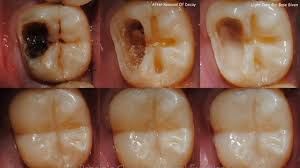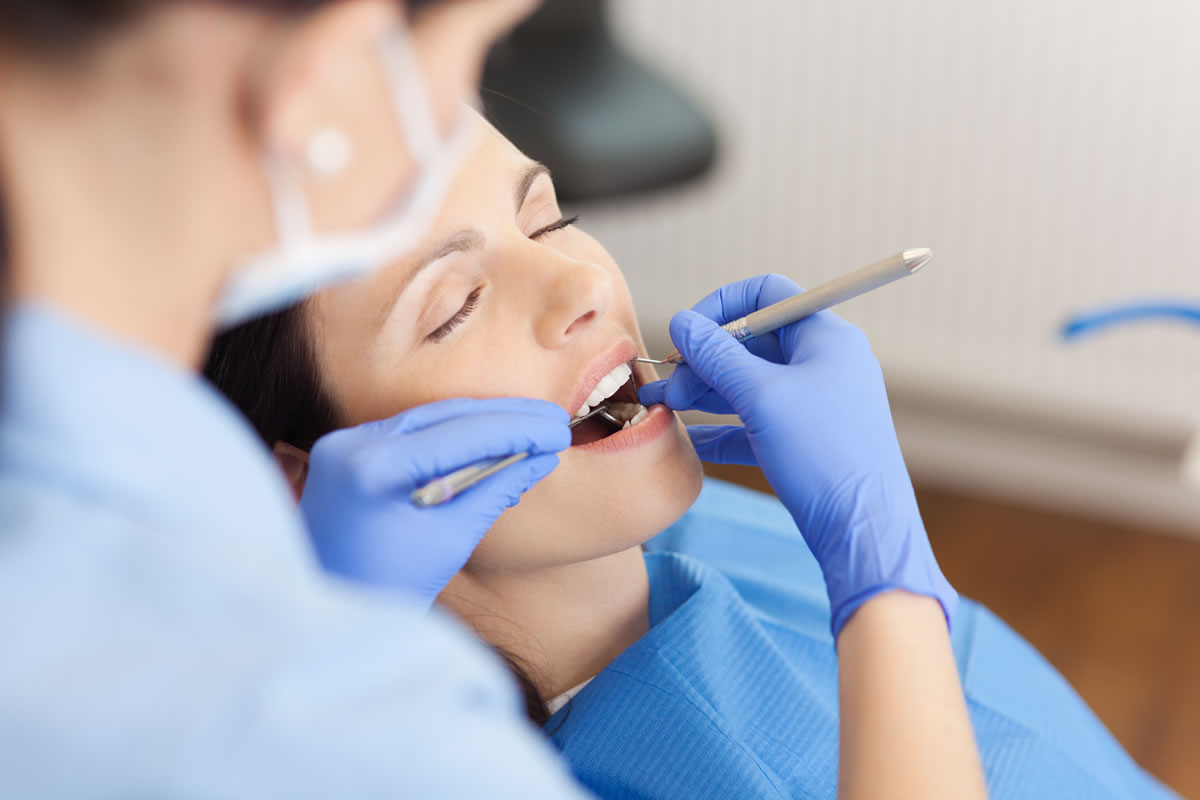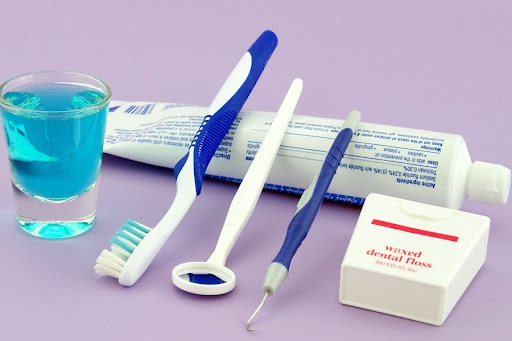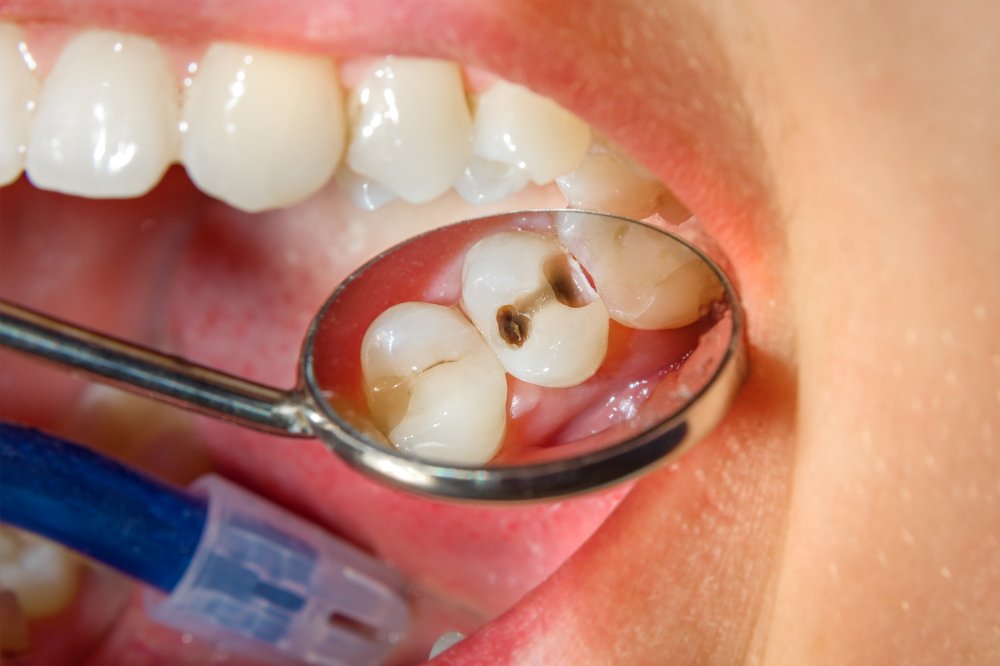Early Signs of Tooth Decay in Adults
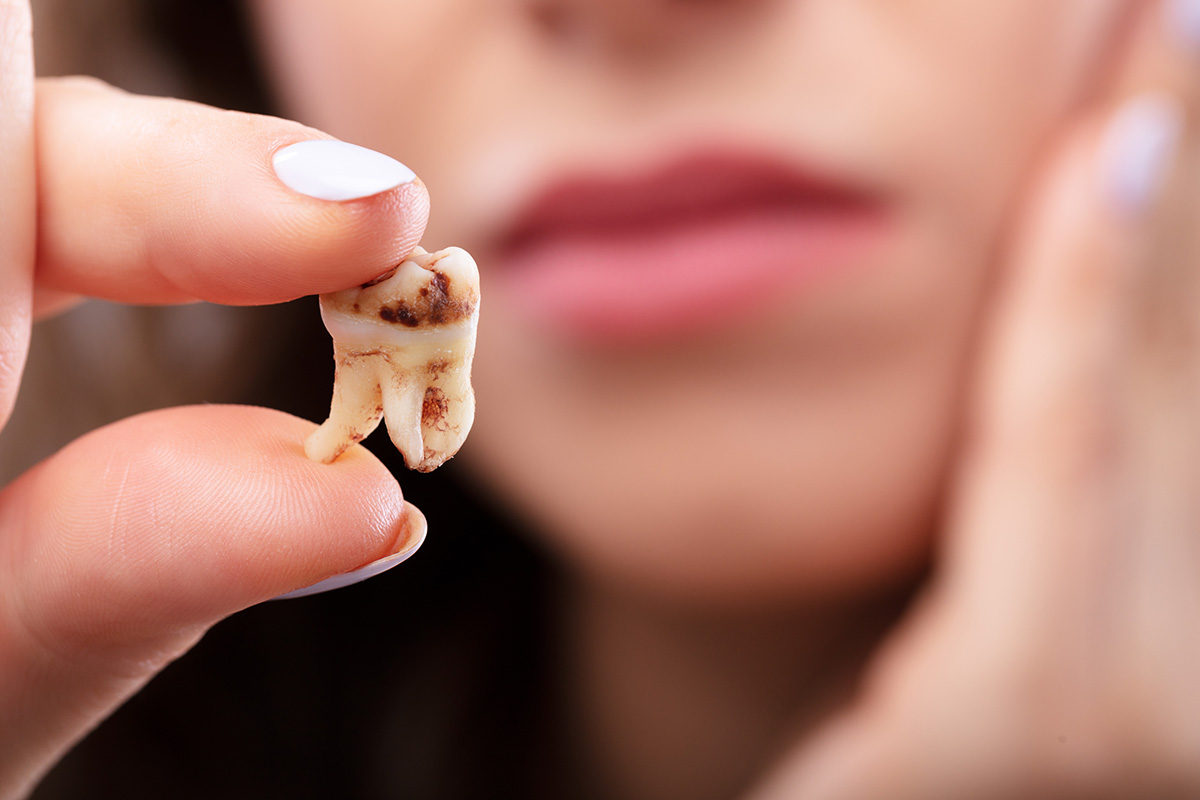
Tooth decay, also known as dental caries or cavities, is a common dental problem that affects people of all ages. Early detection of tooth decay in adults is crucial for preventing more severe dental issues and maintaining overall oral health. This comprehensive guide will explore the early signs of tooth decay in adults, the underlying causes, risk factors, preventive measures, and treatment options.
Understanding Tooth Decay
What is Tooth Decay?
Tooth decay is the process of demineralization and destruction of the tooth structure caused by bacterial activity. It begins with the breakdown of the enamel, the hard outer layer of the tooth, and can progress to affect deeper layers, such as the dentin and pulp.
How Does Tooth Decay Occur?
Tooth decay occurs when the bacteria in the mouth metabolize sugars and starches from food and beverages, producing acids as byproducts. These acids demineralize the enamel, leading to the formation of cavities.
Stages of Tooth Decay
- Initial Demineralization: The first stage involves the loss of minerals from the enamel due to acid attack.
- Enamel Decay: Continued demineralization leads to the formation of tiny holes or pits in the enamel.
- Dentin Decay: If left untreated, the decay progresses to the dentin, the layer beneath the enamel.
- Pulp Involvement: Advanced decay reaches the tooth pulp, causing pain and potential infection.
- Abscess Formation: Severe decay can lead to the formation of an abscess, a pus-filled pocket, requiring urgent medical intervention.
Early Signs of Tooth Decay in Adults
Recognizing the early signs of tooth decay is essential for preventing further damage and seeking timely treatment. Here are some common early indicators:
1. Tooth Sensitivity
One of the earliest signs of tooth decay is increased sensitivity to hot, cold, sweet, or acidic foods and drinks. This sensitivity occurs when the protective enamel is eroded, exposing the underlying dentin, which contains tiny tubules that lead to the tooth’s nerve center.
2. Visible Spots or Stains
White spots on the teeth, known as demineralization spots, are an early sign of enamel erosion. As decay progresses, these spots can turn brown or black, indicating more extensive damage.
3. Toothache or Pain
Mild to moderate tooth pain, especially when biting or chewing, can be an early sign of tooth decay. The pain may be intermittent initially but can become persistent as the decay advances.
4. Bad Breath and Unpleasant Taste
Persistent bad breath (halitosis) and a foul taste in the mouth can result from bacterial activity and decay. These bacteria produce sulfur compounds that cause unpleasant odors.
5. Visible Holes or Pits
As decay progresses, visible holes or pits may form on the surface of the tooth. These cavities can be detected during a dental examination or through self-inspection.
6. Discoloration and Darkening
Discoloration or darkening of the tooth may indicate internal decay. The affected area may appear brown, gray, or black, depending on the severity of the decay.
7. Rough or Jagged Edges
As the enamel erodes, the edges of the teeth may become rough or jagged. This can be noticeable when running the tongue over the surface of the teeth.
8. Swelling and Redness of Gums
Inflammation and swelling of the gums around the affected tooth can occur if the decay reaches the pulp and causes an infection. This condition, known as pulpitis, can lead to more severe complications if left untreated.
Causes and Risk Factors of Tooth Decay
Several factors contribute to the development of tooth decay in adults. Understanding these causes and risk factors can help in adopting preventive measures.
Poor Oral Hygiene
Inadequate brushing and flossing allow plaque, a sticky film of bacteria, to accumulate on the teeth. Plaque produces acids that erode the enamel and lead to decay.
Diet High in Sugars and Starches
Frequent consumption of sugary and starchy foods and beverages provides a constant source of fuel for acid-producing bacteria. This includes sweets, sodas, fruit juices, and processed snacks.
Dry Mouth (Xerostomia)
Saliva helps neutralize acids and wash away food particles. Conditions that reduce saliva flow, such as certain medications, medical treatments, or health conditions, can increase the risk of tooth decay.
Acidic Foods and Beverages
Acidic foods and drinks, such as citrus fruits, sodas, and wine, can directly erode the enamel and contribute to decay.
Medical Conditions
Certain medical conditions, such as diabetes and gastroesophageal reflux disease (GERD), can increase the risk of tooth decay. Diabetes affects the body’s ability to fight infections, while GERD can expose the teeth to stomach acids.
Genetics
Genetic factors can influence an individual’s susceptibility to tooth decay. This includes the composition of saliva, the strength of enamel, and the shape and alignment of teeth.
Age
As people age, the risk of tooth decay increases due to factors such as receding gums, which expose the tooth roots, and the cumulative effects of wear and tear on the teeth.
Smoking and Tobacco Use
Smoking and using tobacco products can contribute to dry mouth, gum disease, and tooth decay. Tobacco use also stains teeth and affects oral health.
Frequent Snacking
Frequent snacking provides a constant source of sugars for bacteria to metabolize and produce acids. This increases the risk of enamel erosion and decay.
Preventive Measures for Tooth Decay
Preventing tooth decay involves adopting good oral hygiene practices, making dietary changes, and seeking regular dental care. Here are some effective preventive measures:
Brushing and Flossing
Brush your teeth at least twice a day with fluoride toothpaste and floss daily to remove plaque and food particles from between the teeth and along the gumline.
Use of Fluoride
Fluoride helps strengthen the enamel and make it more resistant to acid attacks. Use fluoride-containing dental products, such as toothpaste and mouth rinses, and drink fluoridated water.
Healthy Diet
Limit the intake of sugary and starchy foods and beverages. Opt for a balanced diet rich in fruits, vegetables, whole grains, lean proteins, and dairy products.
Regular Dental Visits
Visit your dentist regularly for check-ups and professional cleanings. Regular dental visits can help detect early signs of decay and other dental issues.
Dental Sealants
Dental sealants are thin, protective coatings applied to the chewing surfaces of the back teeth. They can help prevent cavities, especially in individuals at higher risk.
Chewing Sugar-Free Gum
Chewing sugar-free gum stimulates saliva production, which helps neutralize acids and wash away food particles. Look for gum containing xylitol, a natural sugar substitute that can help reduce the risk of decay.
Drinking Water
Drinking water throughout the day helps wash away food particles and bacteria. It also promotes saliva production and helps maintain a healthy pH balance in the mouth.
Avoiding Tobacco Products
Quit smoking and avoid using tobacco products to reduce the risk of tooth decay, gum disease, and other oral health issues.
Addressing Dry Mouth
If you experience dry mouth, talk to your healthcare provider about possible solutions. This may include using saliva substitutes, staying hydrated, and avoiding caffeine and alcohol.
Managing Medical Conditions
Properly managing medical conditions such as diabetes and GERD can help reduce the risk of tooth decay. Follow your healthcare provider’s recommendations for controlling these conditions.
Treatment Options for Early Tooth Decay
If you detect early signs of tooth decay, seeking prompt treatment can prevent further damage and restore oral health. Here are some common treatment options:
Fluoride Treatments
For early-stage tooth decay, fluoride treatments can help remineralize the enamel and reverse the decay process. These treatments are available in the form of gels, varnishes, and foams applied by a dentist.
Dental Fillings
For cavities that have progressed beyond the initial stage, dental fillings are the most common treatment. The decayed portion of the tooth is removed, and the cavity is filled with materials such as composite resin, amalgam, or porcelain.
Dental Crowns
If the decay is extensive and has weakened the tooth, a dental crown may be necessary. A crown is a custom-made cap that covers the entire tooth, providing strength and protection.
Root Canal Treatment
For decay that has reached the tooth pulp, root canal treatment may be required. The infected pulp is removed, and the tooth is cleaned, disinfected, and filled. A crown is often placed over the tooth to restore its function and appearance.
Tooth Extraction
In severe cases where the tooth cannot be saved, extraction may be necessary. The missing tooth can be replaced with a dental implant, bridge, or denture to restore function and aesthetics.
The Importance of Early Detection
Early detection of tooth decay is crucial for preventing more severe dental problems and avoiding invasive treatments. Regular dental check-ups and self-awareness of the early signs can help catch decay in its initial stages, allowing for more conservative and effective treatments.
Benefits of Early Detection
- Minimizes Damage: Early treatment can prevent the decay from spreading and causing more extensive damage.
- Reduces Pain and Discomfort: Addressing decay early can prevent the onset of pain and sensitivity associated with advanced cavities.
- Saves Costs: Treating cavities in their early stages is less expensive than dealing with more complex dental issues.
- Preserves Natural Teeth: Early intervention can help preserve the natural structure and strength of the teeth.
- Prevents Complications: Preventing decay from reaching the pulp and causing infections can avoid the need for more invasive procedures like root canals or extractions.
How to Monitor for Early Signs
- **- Self-Examination: Regularly examine your teeth and gums for any changes in color, texture, or appearance. Look for white spots, discoloration, visible holes, or rough edges.
- Sensitivity Monitoring: Pay attention to any changes in tooth sensitivity to hot, cold, sweet, or acidic foods and beverages.
- Pain and Discomfort: Note any intermittent or persistent toothaches, especially when biting or chewing.
- Breath and Taste: Be aware of any persistent bad breath or unpleasant taste in the mouth.
- Gum Health: Check for signs of swelling, redness, or bleeding in the gums.
The Role of Dental Professionals
Dental professionals play a crucial role in the early detection and treatment of tooth decay. Regular dental visits allow for professional cleanings, examinations, and the use of diagnostic tools to identify decay in its early stages.
Professional Examinations
Dentists use various methods to detect tooth decay, including:
- Visual Examination: Dentists look for visible signs of decay, discoloration, and damage during routine check-ups.
- Dental X-Rays: X-rays can reveal decay between teeth and below the gum line, areas not visible during a visual examination.
- Caries Detection Devices: Advanced tools such as laser fluorescence devices can detect early decay by measuring changes in the tooth structure.
- Probing: Dentists use dental instruments to gently probe the teeth and check for soft spots indicative of decay.
Professional Cleanings
Professional dental cleanings help remove plaque and tartar buildup, reducing the risk of decay. These cleanings also allow dental professionals to identify early signs of decay and provide preventive treatments.
Preventive Treatments
In addition to regular cleanings, dentists may recommend preventive treatments such as fluoride applications, dental sealants, and oral hygiene education to help patients maintain healthy teeth and gums.
Common Misconceptions About Tooth Decay
Several misconceptions about tooth decay can prevent individuals from seeking timely treatment or adopting effective preventive measures. Addressing these misconceptions is essential for promoting oral health.
Misconception 1: Only Children Get Cavities
While cavities are common in children, adults are also susceptible to tooth decay. Factors such as aging, diet, and oral hygiene practices contribute to the risk of decay in adults.
Misconception 2: Cavities Always Cause Pain
Tooth decay does not always cause pain in its early stages. By the time pain is felt, the decay may have progressed significantly. Regular dental check-ups are crucial for detecting decay before it becomes painful.
Misconception 3: Brushing Alone Prevents Cavities
While brushing is essential, it is not sufficient on its own to prevent cavities. Flossing, using fluoride products, and maintaining a healthy diet are also necessary for comprehensive oral care.
Misconception 4: Sugar is the Only Cause of Cavities
While sugar is a significant contributor to tooth decay, other factors such as poor oral hygiene, dry mouth, and acidic foods and beverages also play a role. A holistic approach to oral health is essential for preventing cavities.
Misconception 5: Tooth Decay is Irreversible
Early-stage tooth decay can be reversed with proper care, including fluoride treatments and improved oral hygiene. However, once cavities form, professional dental treatment is required to restore the tooth.
Case Studies and Real-Life Examples
Examining case studies and real-life examples can provide valuable insights into the early signs of tooth decay and the importance of timely intervention.
Case Study 1: Early Detection and Prevention
A 35-year-old patient visited the dentist for a routine check-up. During the examination, the dentist noticed white spots on the patient’s molars, indicative of early enamel demineralization. The patient reported occasional sensitivity to cold drinks but no pain. The dentist recommended fluoride treatments and provided oral hygiene education. At the six-month follow-up, the patient’s enamel had remineralized, and no cavities had formed.
Case Study 2: Progression of Untreated Decay
A 50-year-old patient neglected regular dental visits for several years. The patient eventually sought dental care due to persistent tooth pain and swelling. Examination revealed extensive decay affecting multiple teeth, with some cavities reaching the pulp. The patient required several root canal treatments and dental crowns to restore function and alleviate pain. The case highlighted the consequences of delaying dental care and the importance of early detection.
Real-Life Example: Impact of Diet and Oral Hygiene
A 40-year-old patient with a history of frequent snacking on sugary foods and poor oral hygiene practices developed multiple cavities. The patient experienced tooth sensitivity and visible dark spots on the teeth. After adopting a healthier diet, improving oral hygiene, and receiving dental fillings, the patient’s oral health significantly improved. The case emphasized the role of diet and hygiene in preventing tooth decay.
The Future of Tooth Decay Detection and Prevention
Advancements in dental technology and research continue to improve the detection and prevention of tooth decay. Innovations such as digital imaging, laser diagnostics, and minimally invasive treatments hold promise for enhancing oral health care.
Digital Imaging
Digital imaging technologies, including 3D scanning and intraoral cameras, provide detailed views of the teeth and gums. These tools allow for more accurate detection of early decay and better treatment planning.
Laser Diagnostics
Laser fluorescence devices can detect early demineralization and decay by measuring changes in tooth structure. These non-invasive tools offer a more precise and painless method for identifying decay.
Minimally Invasive Treatments
Advances in dental materials and techniques have led to the development of minimally invasive treatments for tooth decay. For example, air abrasion technology allows dentists to remove decay without the need for traditional drilling, preserving more of the natural tooth structure.
Research on Biomaterials
Ongoing research into biomaterials aims to develop new materials that can mimic natural enamel and dentin, offering better protection and restoration options for decayed teeth. These materials have the potential to improve the longevity and effectiveness of dental treatments.
Personalized Oral Health Care
The future of oral health care may involve personalized approaches tailored to an individual’s risk factors and needs. Genetic testing, salivary diagnostics, and advanced imaging could provide a more comprehensive understanding of each patient’s oral health, leading to more targeted and effective preventive measures.
Conclusion
Early detection and prevention of tooth decay in adults are crucial for maintaining oral health and overall well-being. Recognizing the early signs of tooth decay, understanding the underlying causes and risk factors, and adopting effective preventive measures can help individuals avoid more severe dental issues. Regular dental visits, proper oral hygiene, and a healthy lifestyle are essential components of preventing tooth decay and ensuring a lifetime of healthy smiles.
By staying informed and proactive, adults can take control of their oral health and prevent the progression of tooth decay. Advances in dental technology and research continue to offer new tools and treatments for early detection and prevention, making it easier than ever to maintain healthy teeth and gums. Regular check-ups, professional cleanings, and a commitment to good oral hygiene practices are the foundation of a healthy mouth and a vital part of overall health.
Related to read:
Best Oral Hygiene Practices For Optimum Oral Health.
How to Whiten Teeth Naturally?
How to keep your gums healthy and disease-free?
References
To ensure the information provided is accurate and up-to-date, the following sources were referenced:
- American Dental Association. (n.d.). Plaque and Tartar. Retrieved from ADA website
- Mayo Clinic. (n.d.). Dental Plaque. Retrieved from Mayo Clinic website
- National Institute of Dental and Craniofacial Research. (n.d.). Periodontal (Gum) Disease. Retrieved from NIDCR website



